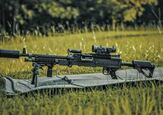In Part 1 of this article, I talked about the first prototypes of Yugoslav AKs, in Part 2 we dived into the history of M70 rifles with milled receivers, Part 3 was dedicated to the most common Zastava M70s and this chapter will go over Zastava AKs developed during the collapse of Yugoslavia.
AK History @ TFB:
- AKs from Finland. Part 4: RK 95, The Last of the Clan
- Egyptian AKs (Misr, Maadi). Part 2: Quality, Problems and Modernization Projects
- East Germany AKs – The Best In The World? Part 3: Less Known Variants
- Hungarian AKs (Part 4): From Wonderfully Weird to Plain and Reliable
After the death of Tito in 1980, the economic problems in Yugoslavia were becoming more evident. Loans previously taken by the communist government had to be paid and inflation was rising rapidly. Yugoslavian arms industry now had to increase the exports to survive. They did it pretty well: the country built a large arms factory in Iraq and exported weapons to Lebanon, Kuwait, Emirates, Angola, Zambia, and a few other countries.
To boost export sales, Zastava created an entire family of Yugoslav AKs chambered for 5.56×45, which were first revealed to the public in 1985 at the expo in Belgrade. Later on, those designs were used as the foundation for the M21 rifle which I wrote about before.
By the early 90s, the country began to collapse. Republics that formed Yugoslavia, acting like a bunch of irritated family members, started declaring that “I will be better off alone”. Some republics left Yugoslavia without a fight, like Macedonia, and others gained independence after years of war with numerous war crimes, ethnic cleansing and genocide.
How did a peaceful country manage to become a warzone in mere days? The answer lies in the structure of the Yugoslav army. During WW2, it was the only country that basically liberated itself from the Nazis (with some outside help). So the concept of partisans and militias was a part of national defense.
Reservists were trained in advance, and hundreds of thousands of rifles were in storage in case an invasion came. But the enemy came from within. Every army of a newly-independent part of the country relied on existing recruitment systems and arsenals. People were drafted based on an established mobilization system – not to repel the invasion, but to fight with their neighbors, friends, and relatives.
This war once again revived the phenomenon of “trench art” when soldiers from different sides of the conflict carved their names into the stocks and handguards, put stickers on rifles, and even burned pictures on wood. Sometimes it was silly, sometimes it was real art: portraits, quotes from books and poetry.
After the war, a lot of those guns spread around the world. In Afghanistan, I had plenty of Yugoslav AKs with names carved in them.
Many security contractors in Kabul were from Bosnia and Herzegovina, veterans of Yugoslav wars. I had so many guns with names carved in them, that if I tried, I could give every other contractor a gun that had his exact name carved into wooden parts.
But despite the war and crisis, weapon development at the Zastava factory did not stop. In 1992, the factory started production of the M92, a short-barrel AK rifle resembling the Soviet AKS 74U. It is based on the Zastava M85 chambered in 5.56×45.
The same year when M92 went into production, Yugoslavia was sanctioned and the export of armaments nearly stopped. Only after the election of 2000, when President Milosević was voted out of office and sent to the Hague tribunal, exports of Yugoslav AKs continued.
M92 was exported to multiple countries, including the US, where this rifle is known as ZPAP92. I was first introduced to this gun in Afghanistan. Those Yugoslav AKs were in really high demand for two reasons.
First, the M92s were the newest AK rifles we had. Afghanistan, besides other things, is like a giant open-air Kalashnikov museum. But most of the stuff you see there is quite old, and getting brand-new guns is tricky. M92s were given to the “more important” contractors.
For example, in an embassy, you would have three different units protecting the facility. The first line of defense was the Afghans outside the main compound who used various old AKs. The second line of defense is Gurkha contractors from Nepal and India that used M92s. The last line of defense was the contractors from the country the embassy represented. They generally used some AR-variants, since that is what they had back in the military days.
The second reason the M92 was popular is the size. In some remote regions, walking around with a rifle is asking for trouble. But the M92 fits in a backpack, and you can walk around with it without attracting too much attention. That is why many security units who worked in provinces outside of Kabul always asked me to get them M92.

